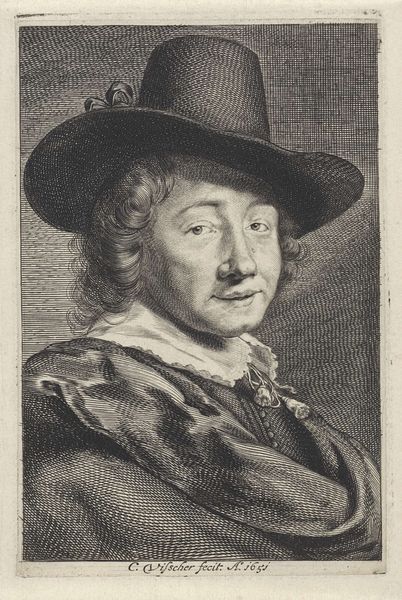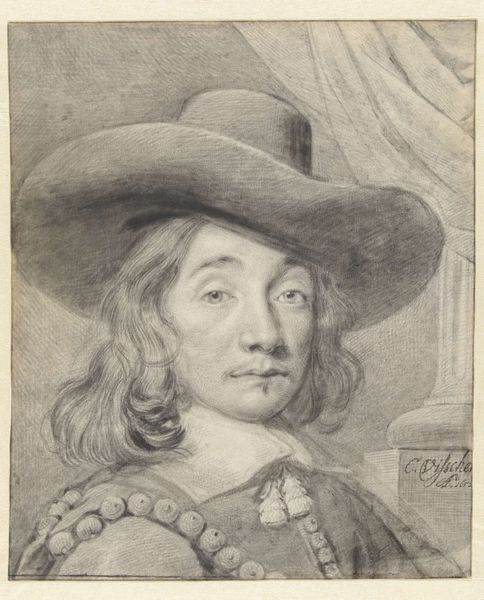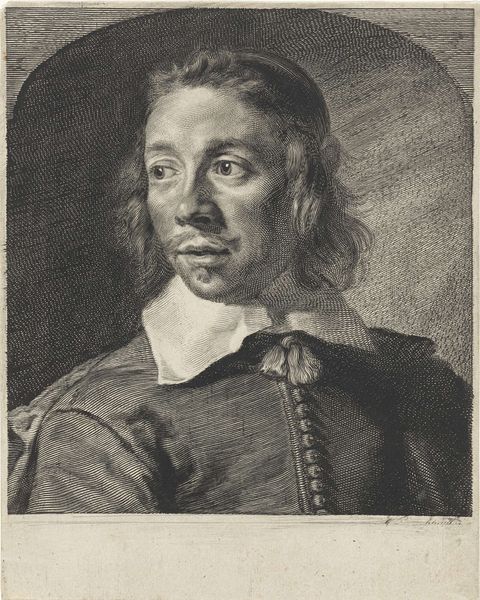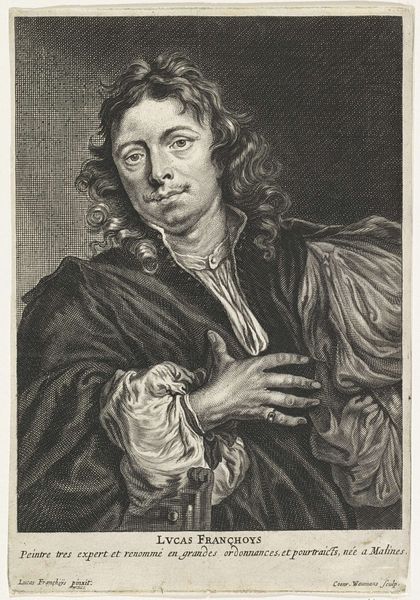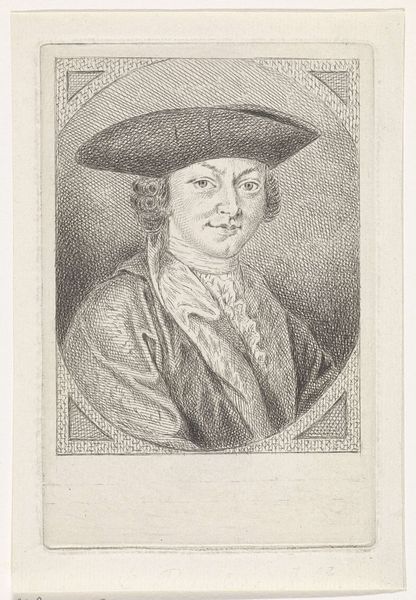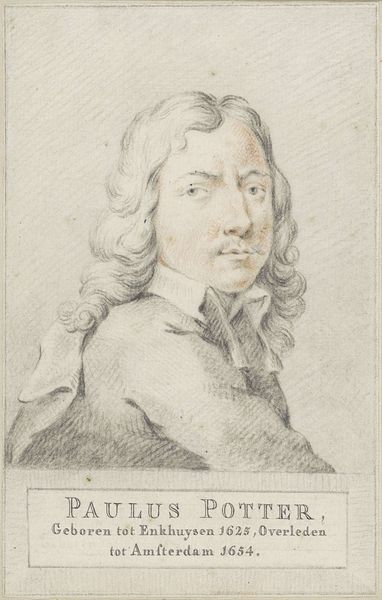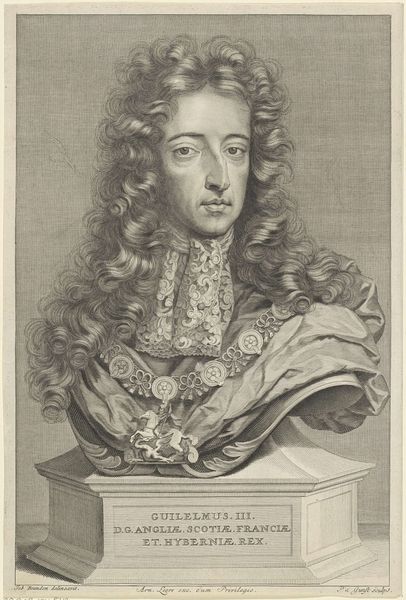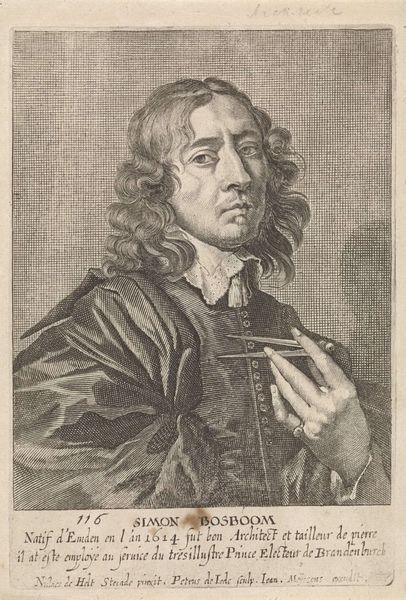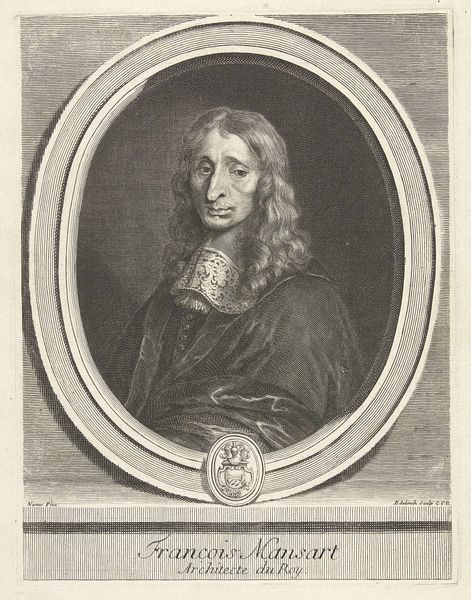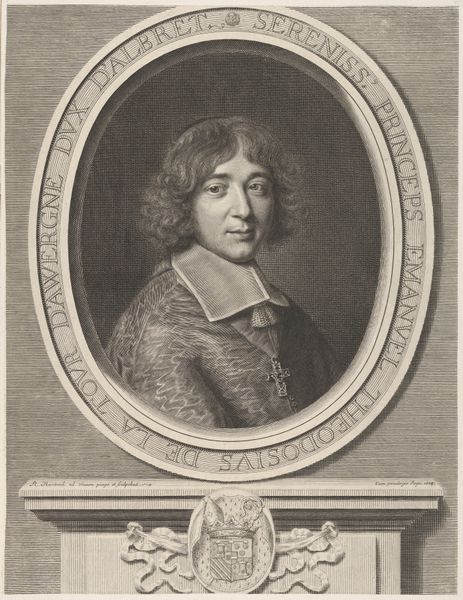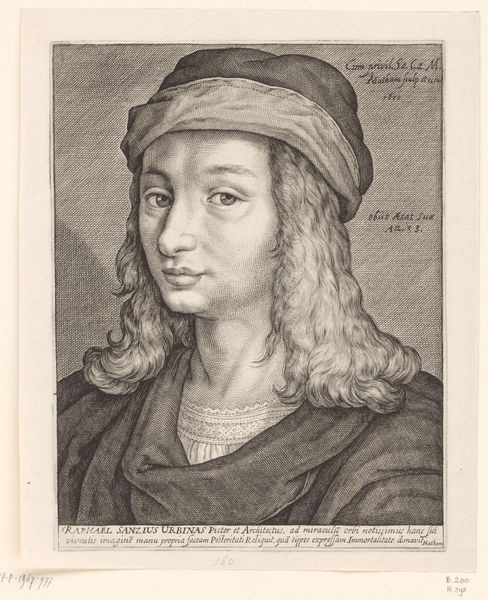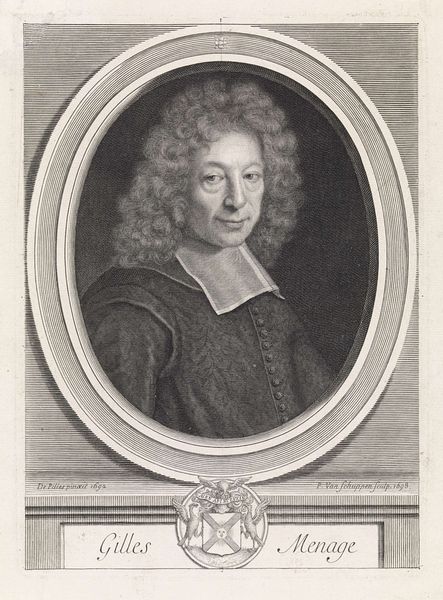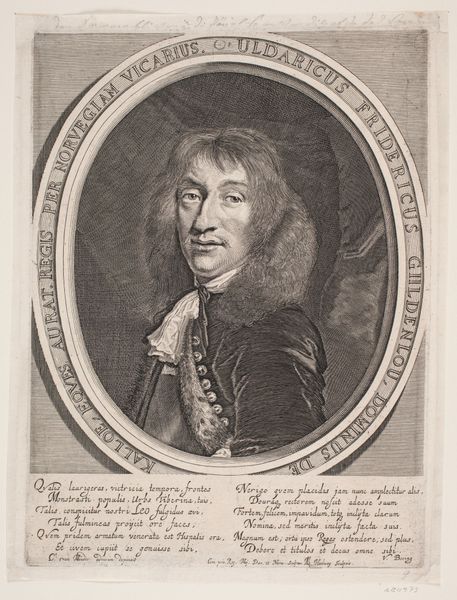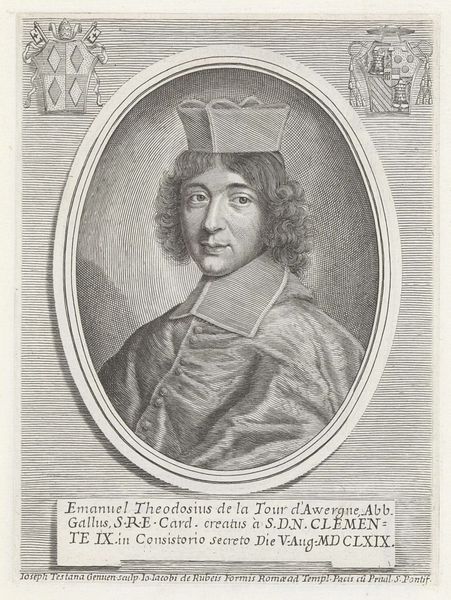
engraving
#
portrait
#
baroque
#
dutch-golden-age
#
engraving
Dimensions: height 136 mm, width 95 mm
Copyright: Rijks Museum: Open Domain
This is Cornelis Visscher's self-portrait, etched in 1649. The artist presents himself with a refined nonchalance, emphasized by the hat and the delicate gesture of his hand holding his cloak. This gesture of holding a cloak or robe, appears across centuries, evoking introspection and a connection to the self. We see echoes of this in classical sculptures depicting philosophers or even in Renaissance portraits. The act of self-representation goes back to the earliest civilisations. We can see it in ancient Egyptian art, where the deceased are depicted in their tombs to ensure their afterlife. This evolves through classical antiquity, in painted portraits on wooden panels, such as the Fayum portraits of Roman Egypt. In Visscher’s self-portrait, the gesture and focused gaze, combined with the trappings of status, create a subtle tension between the artist's inner world and his public persona. The cyclical nature of art allows us to trace how these symbolic motifs resurface, evolve, and take on new meanings in different historical contexts.
Comments
No comments
Be the first to comment and join the conversation on the ultimate creative platform.
